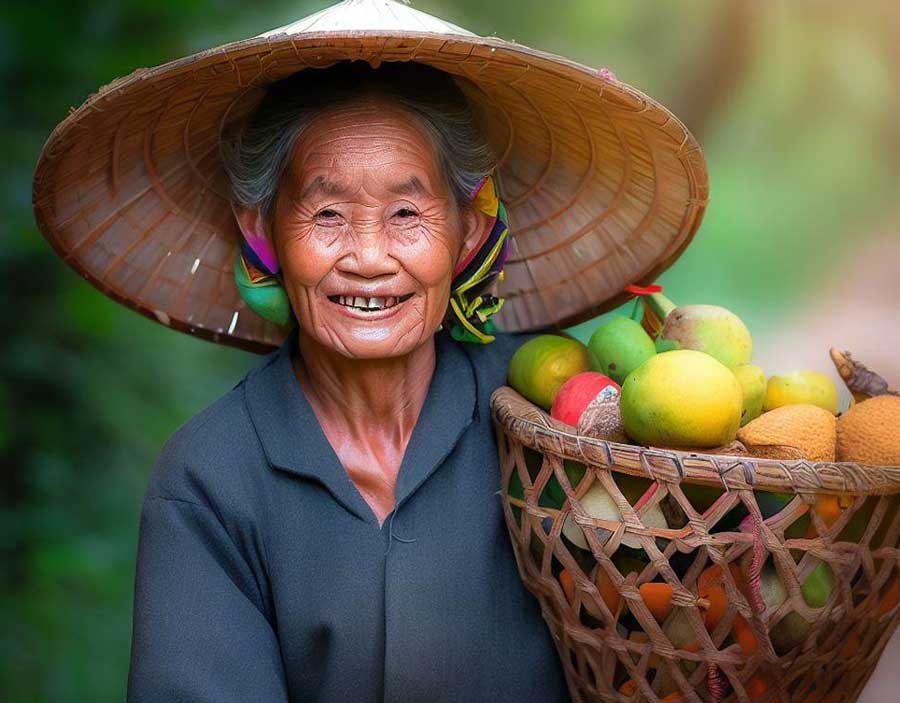Why Are There So Many Exotic Fruits in Thailand?
Thailand’s astounding variety of exotic fruits is a result of several intertwined factors that have shaped its fruit culture.
Firstly, the country’s tropical climate, characterized by high temperatures and abundant rainfall, provides the ideal environment for a diverse range of fruit-bearing plants to flourish. This unique climate allows for the cultivation of fruits that may not thrive in temperate regions, leading to the abundance of exotic fruits in Thailand that you won’t find anywhere else.
Another factor is Thailand’s exceptional biodiversity. This plays a crucial role in its diversity of exotic fruits. The nation’s rich ecosystems provide fertile grounds for the cultivation and evolution of numerous fruit species. Different regions of Thailand, with their distinct microclimates, support various fruit varieties, contributing to the nation’s fruit diversity. These regional differences enable specialized cultivation, adding to the tapestry of available fruits.
Lastly, Thailand’s active participation in the global fruit trade has brought fruits from around the world to its shores. The country’s position as a major player in the global market has contributed to the introduction and cultivation of a wide range of fruits. The combination of a favourable climate, rich biodiversity, cultural traditions, and international trade has transformed Thailand into a paradise for fruit enthusiasts.
Now you know a bit about why there are so many exotic fruits in Thailand, let’s have a look at fifteen of the most exotic. Some of these you may never have seen before!
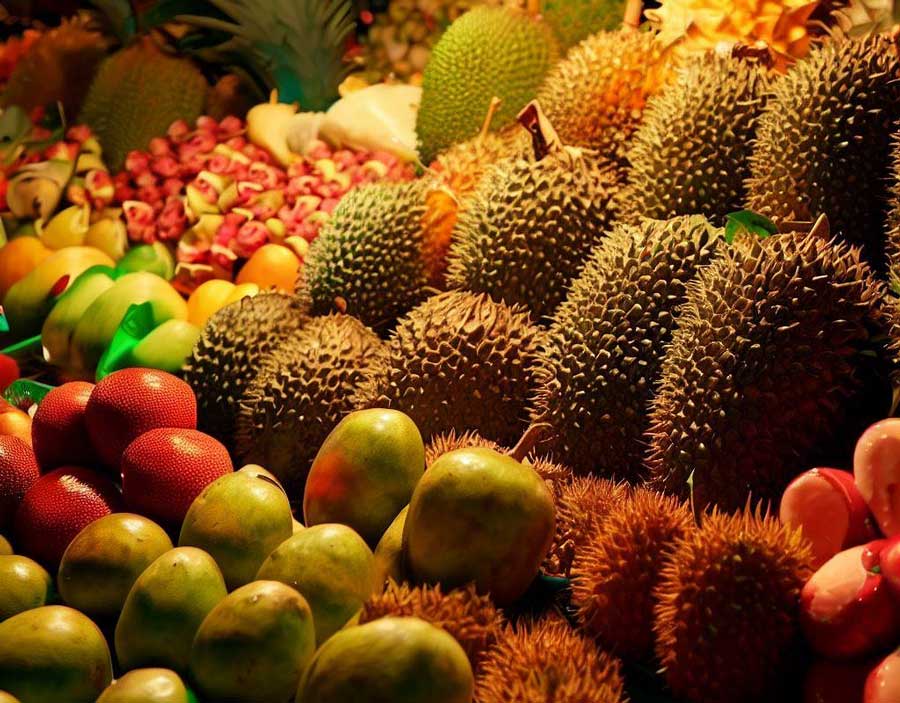
15 of The Most Exotic Fruits in Thailand
Durian (ทุเรียน): The King of Fruits
Known as the “King of Fruits,” durian reigns supreme as a tropical delicacy, celebrated for its distinctive aroma and unique flavour. Its custard-like flesh is an intriguing blend of rich sweetness, creaminess, and subtle undertones of onion and garlic.
While the pungent smell of durian divides opinion, it’s a must-try for adventurous eaters seeking an authentically exotic Thai culinary adventure. Just beware though because lots of hotels actually ban durian because the smell is so extreme!
There have also been reports of people overdosing on durian. This is because it can actually raise your body temperature, which is something you don’t want in a hot country like Thailand.
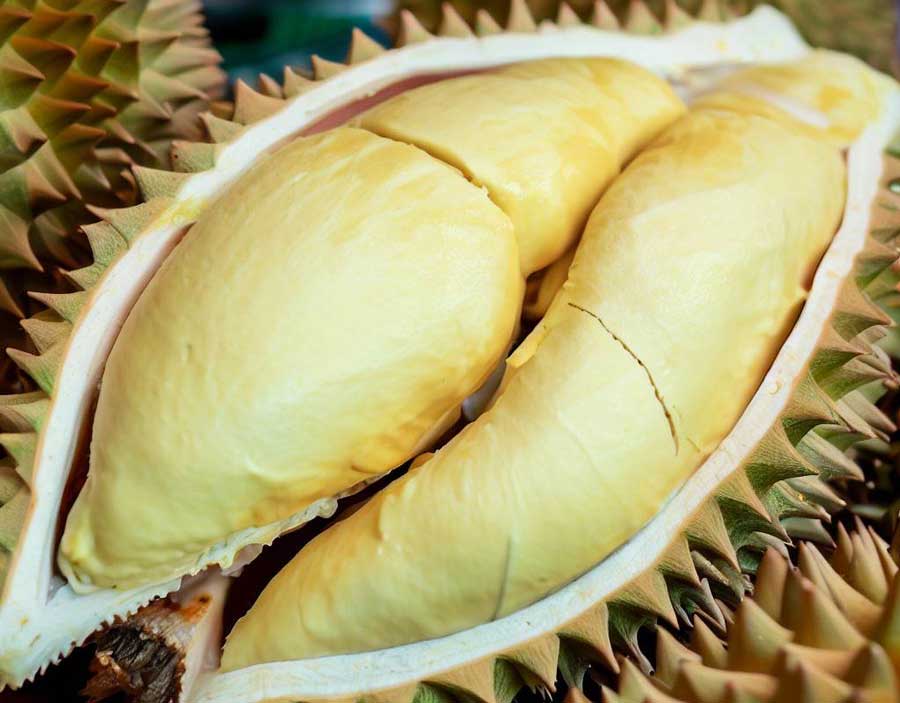
Mangosteen (มังคุด): The Queen of Fruits
If durian is the king of the fruits, then mangosteen is the “Queen of Fruits.” Mangosteen enchants with its regal appearance and delightful taste. The deep purple rind, when opened, reveals juicy white flesh that’s a tantalizing blend of sweetness and tanginess. Incredibly refreshing, it’s often considered a tropical treasure and is beloved for its exquisite flavour profile, making it a regal presence in Thai fruit offerings.
Mangosteen is easily one of my favourite fruits in Thailand. It’s just a shame it’s not in season all year long.
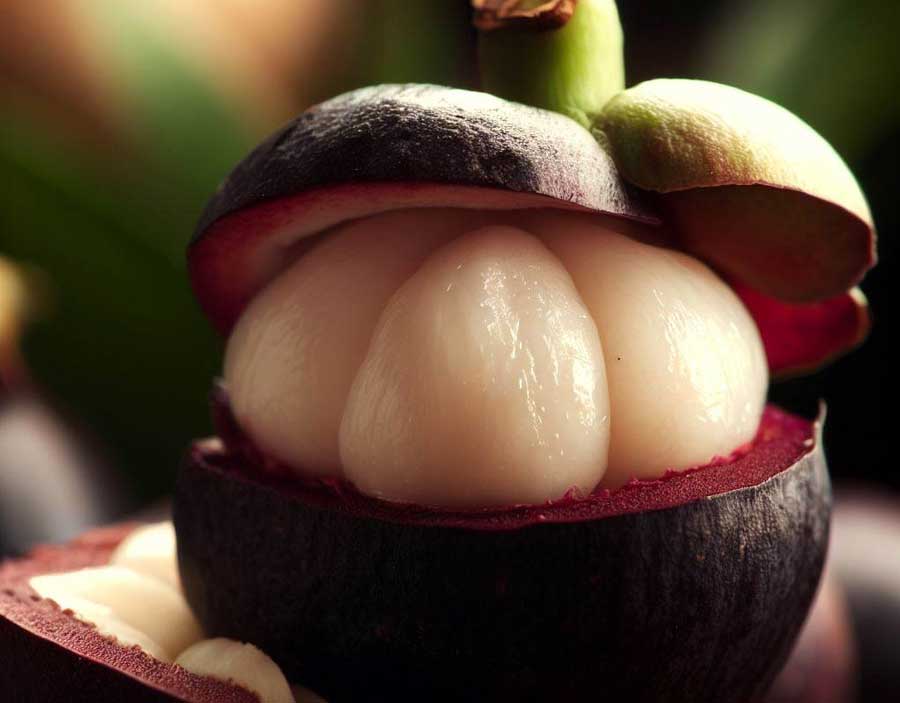
Rambutan (เงาะ): The Hairy Sweet Delight
Rambutan, with its hairy, reddish exterior, might appear like a tiny sea urchin, but the inner reward is a sweet and juicy surprise. The translucent flesh, reminiscent of lychee, strikes a delightful balance of sweetness with a hint of captivating acidity. It’s a delightful and visually intriguing addition to Thailand’s exotic fruit collection, cherished for its unique taste and texture, it is certainly one of the most exotic fruits in Thailand.
An added bonus of rambutan is that rambutan trees are actually evergreen. This means that their cultivation can help protect against soil erosion. They are often grown alongside other tropical fruit trees in Thailand. This contributes to diverse and sustainable agricultural practices, which are sometimes lacking in Thailand.
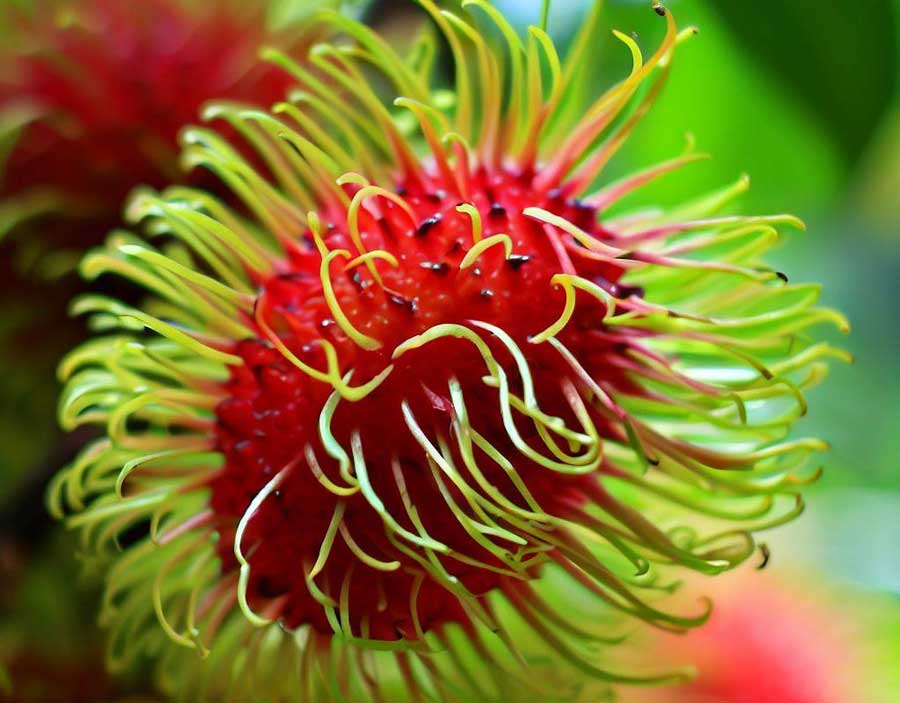
Longan (ลำไย): The Little Brother of Lychee
Longan, is often called the “little brother” of the lychee. This because, like lychee, longan has a single, large seed that cannot be consumed. The seed is removed, and only the flesh is consumed.
It is adored for its translucent, sweet, and slightly floral-tasting flesh. These small, round fruits are found mostly in the north of Thailand around Chiang Mai and Lamphun, and offer a delightful burst of juiciness with every bite, making them a beloved Thai treat. Longan’s delicate flavour and refreshing qualities make it a popular choice for those seeking an exotic tropical fruit experience.
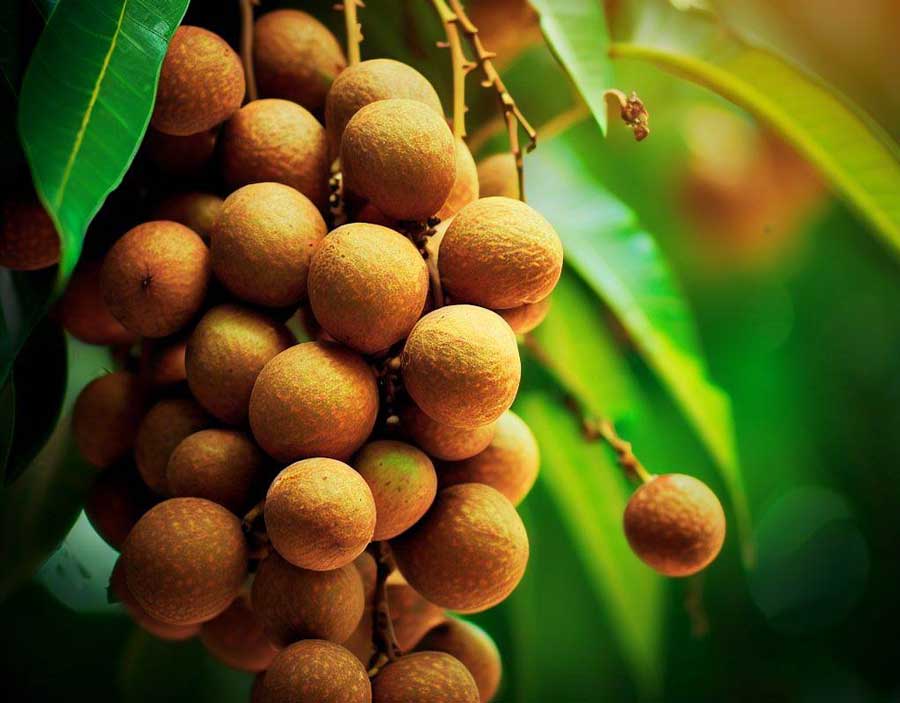
Salak (สละ): A Scaly Wonder
Salak, aptly named “Snake Fruit” for its reddish-brown, scaly skin, conceals a unique flavour within its unusual appearance. The fruit’s flesh is a delightful blend of sweetness and tanginess with a slight crunch, making it a striking and memorable addition to Thailand’s exotic fruit repertoire. It’s a sensory adventure for those seeking uncommon tastes and textures because it’s really unlike anything found in the west.
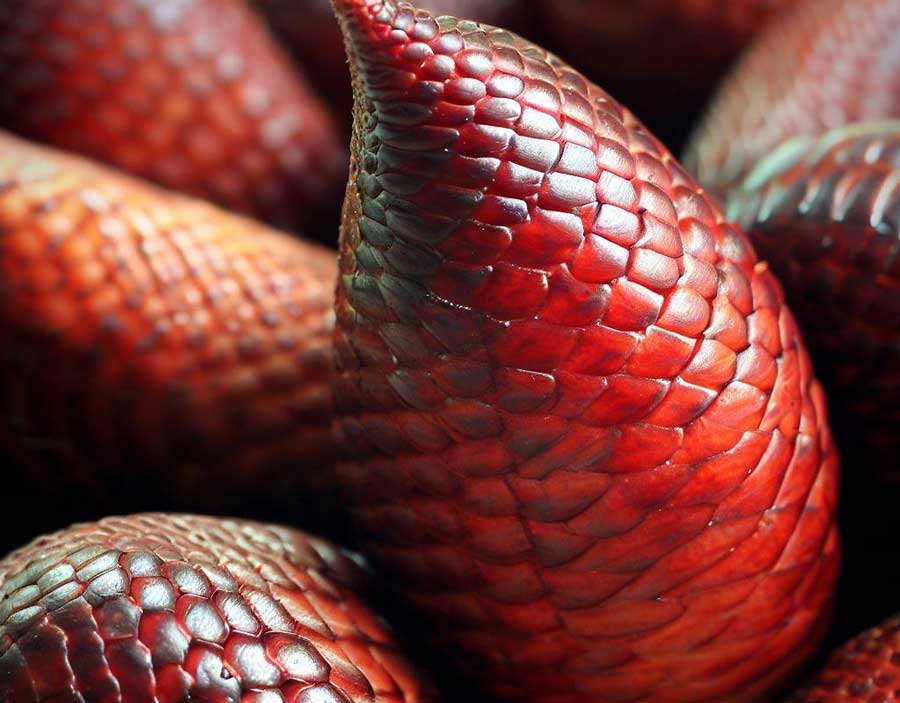
Dragon Fruit (แก้วมังกร): Vibrant and Mildly Sweet
Dragon fruit, known for its striking appearance, features vibrant pink or white flesh speckled with tiny black seeds. It’s easily one of the most visually striking fruits in Thailand and is usually the first to catch the eye in any fruit market.
This unusual fruit is not only visually stunning but also exceptionally delicious. Its taste is mildly sweet, with a subtle flavour reminiscent of kiwi. The texture is refreshingly crisp, making it a popular addition to Thai fruit platters.
Dragon fruit is not just a treat for the taste buds; it’s a feast for the eyes, making it an enticing choice for both the palate and presentation in Thailand’s diverse fruit offerings.
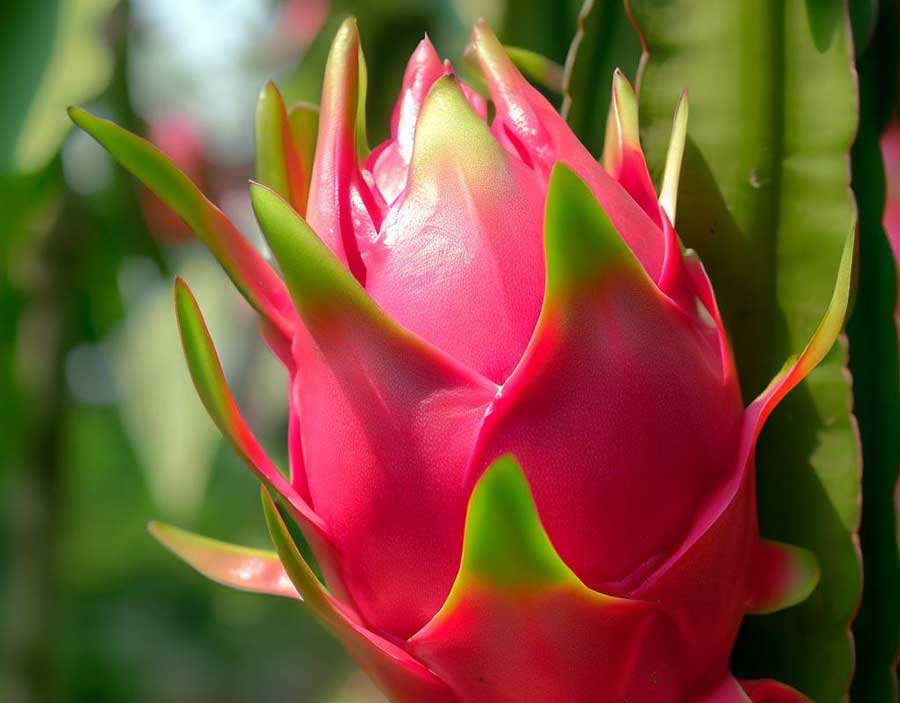
Pomelo (ส้มโอ): The Giant Citrus Delight
Pomelo, often referred to as the giant citrus delight, is a remarkable tropical fruit that boasts sweet, slightly tart flesh concealed beneath a thick, green or yellow rind. Its taste is both refreshing and invigorating, making it a cherished choice for snacking and enhancing the flavours of salads in Thailand.
The fruit’s segments are notably large, offering juicy, citrusy goodness with every bite. Pomelo’s ability to balance sweet and tangy notes makes it a versatile ingredient in Thai cuisine, where it’s used in both sweet and savoury dishes, imparting a unique citrusy zing to culinary creations.

Rose Apple (ชมพู่): Bell-Shaped Refreshment
Resembling a petite bell, rose apples are a delightful tropical fruit that offers crisp, watery flesh with a mildly sweet taste. These bell-shaped wonders are particularly cherished for their refreshing qualities, making them a preferred choice to combat Thailand’s tropical heat.
The thirst-quenching properties of rose apples make them a popular street food snack, providing a cool and invigorating respite on hot days. Whether enjoyed fresh or as part of a fruit salad, rose apples are a sought-after treat in Thai cuisine, adding a touch of crisp sweetness to the culinary tapestry.
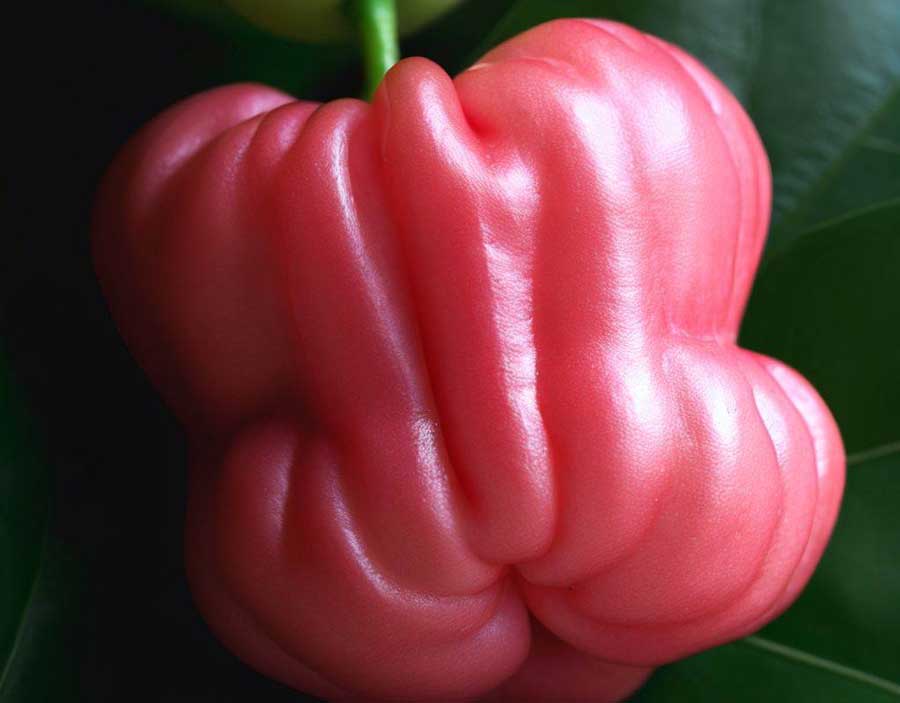
Santol (กระท้อน): Sweet and Sour Sensation
Santol is a captivating tropical fruit that undergoes a fascinating transformation in flavour as it ripens. When unripe, its flesh is characterized by a delightful sourness, but as it matures, it evolves into sweet and tangy goodness. This sweet and sour sensation makes Santol a versatile ingredient in Thai salads, lending a complex taste profile to culinary creations. The fruit’s ability to shift between contrasting flavours showcases the diversity of Thai cuisine, where it’s embraced for its unique characteristics. Santol is a tropical treasure that delivers a delectable surprise with every bite, offering a delightful culinary journey in Thailand.
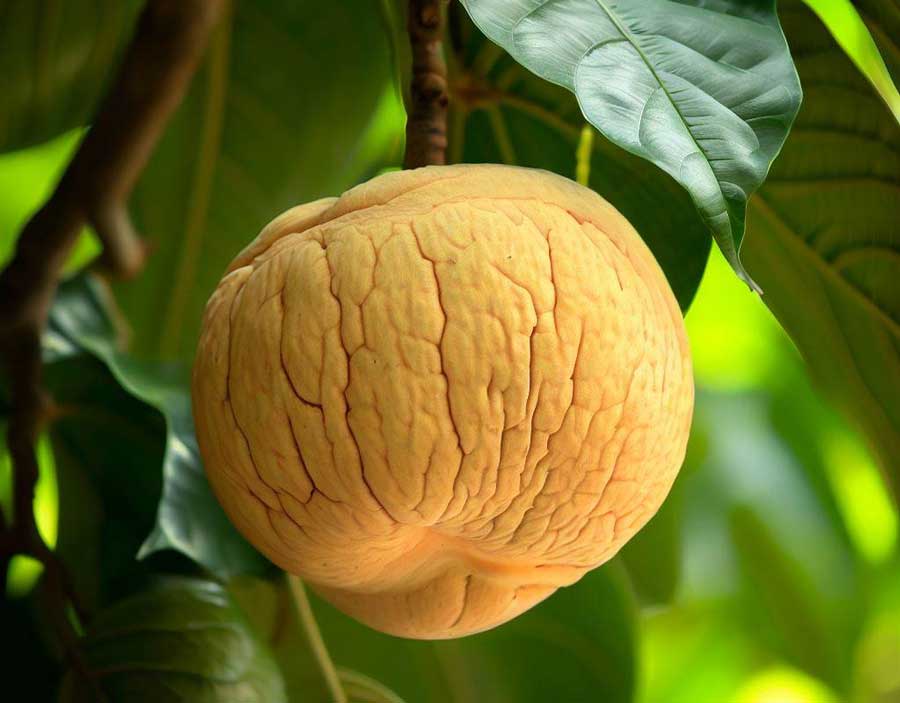
Custard Apple (น้อยหน่า): Creamy Delight
Custard apples, also known as Sweetsop, are a tropical treasure with a delectably creamy flesh that conjures up the enchanting flavours of vanilla and custard. This exotic fruit’s unique texture, reminiscent of velvety custard, envelops the taste buds in a lush embrace. In Thailand, they are a beloved indulgence, offering a sublime blend of sweetness and sophistication that’s hard to resist.
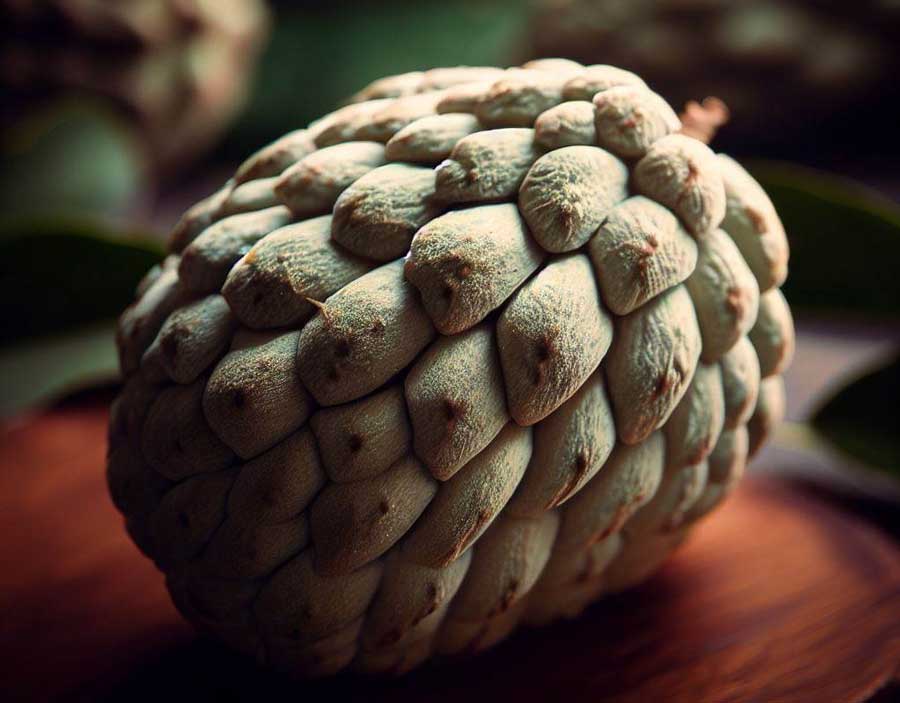
Sapodilla (ละมุด): Grainy Sweetness
Sapodilla, often referred to as Chikoo, presents a delightful amalgamation of grainy texture and sweet, honeyed flavours reminiscent of ripe pears and brown sugar. Its granular nature adds character to each bite, enhancing the overall experience. Revered by locals and visitors alike, Sapodilla is a beloved Thai fruit, celebrated for its exceptional taste and unique mouthfeel.
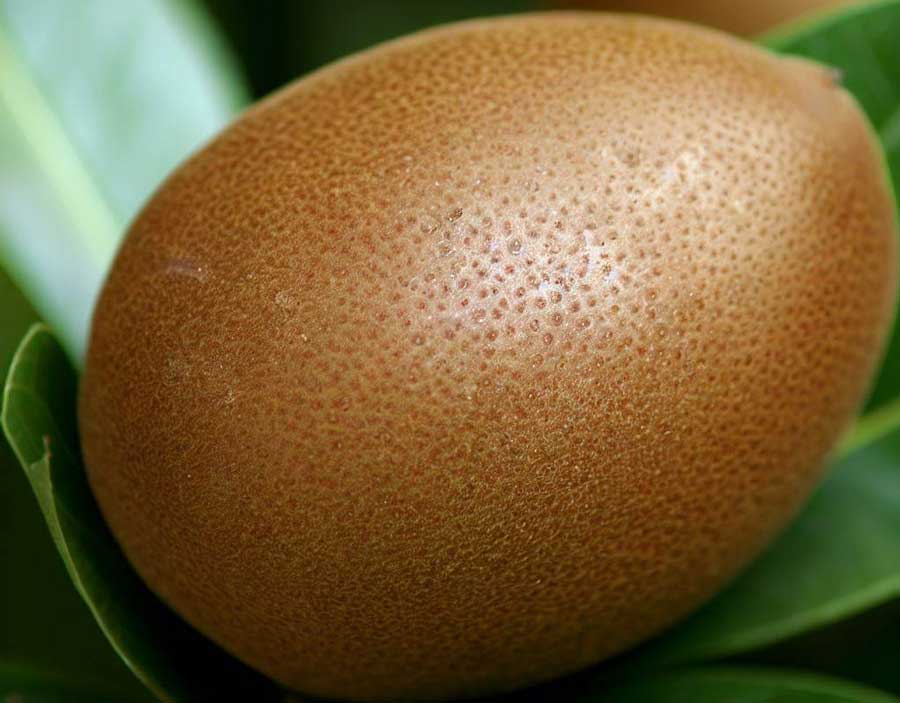
Tamarind (มะขาม): The Tangy Essence
Tamarind, known for its distinctive tangy essence, is a culinary cornerstone in Thai cuisine. Encased within its pods lies a tart pulp that imparts a vibrant sour note to a myriad of Thai dishes, from zesty curries to tantalising sauces, and is one of the main ingredients in Pad Thai.
It’s a flavourful dance of sweet and sour, enhancing the depth and complexity of Thailand’s culinary creations.

Jackfruit (ขนุน): The Giant Sweet Marvel
Jackfruit, the colossal wonder of fruits, dazzles with its generous portions of sweet, fibrous flesh. It is actually the world’s largest fruit and reach a massive 1 meter in length!
The latex from the jackfruits free is for various purposes in Thailand, including as a natural adhesive and in traditional Thai medicine as well.
Jackfruit’s captivating flavour profile harmonises the tropical essence of pineapple with the mellow sweetness of banana. This versatile giant is celebrated in Thai cuisine, cherished for its ability to shine in both ripe and unripe forms, offering a delightful spectrum of taste experiences.
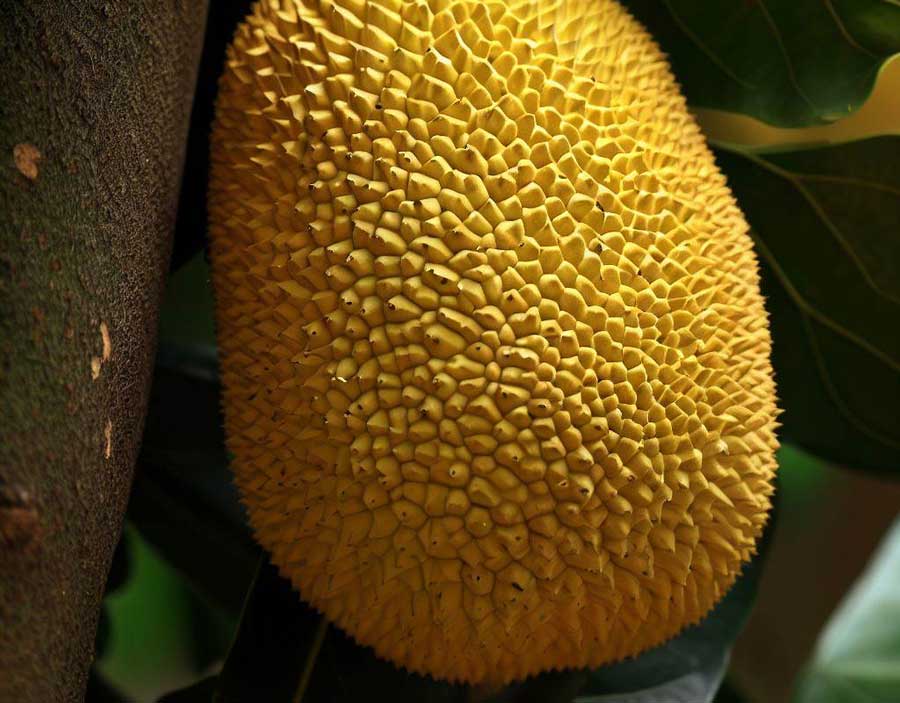
Star fruit (มะเฟือง): A Star-Shaped Delicacy
Star fruit, aptly sliced into radiant star shapes, presents a unique visual and gastronomic treat. Its crisp texture is complemented by a subtly sweet and tangy taste, making it an appealing addition to Thai fruit platters. This star-shaped delicacy is not only visually enchanting but also a refreshing and delightful culinary experience.
The only downside with star fruit is the short shelf life. It is best consumed soon after ripening, as it can become overripe and mushy quickly. Star fruit is also prone to browning when cut, so don’t leave it sitting around on your plate for too long.
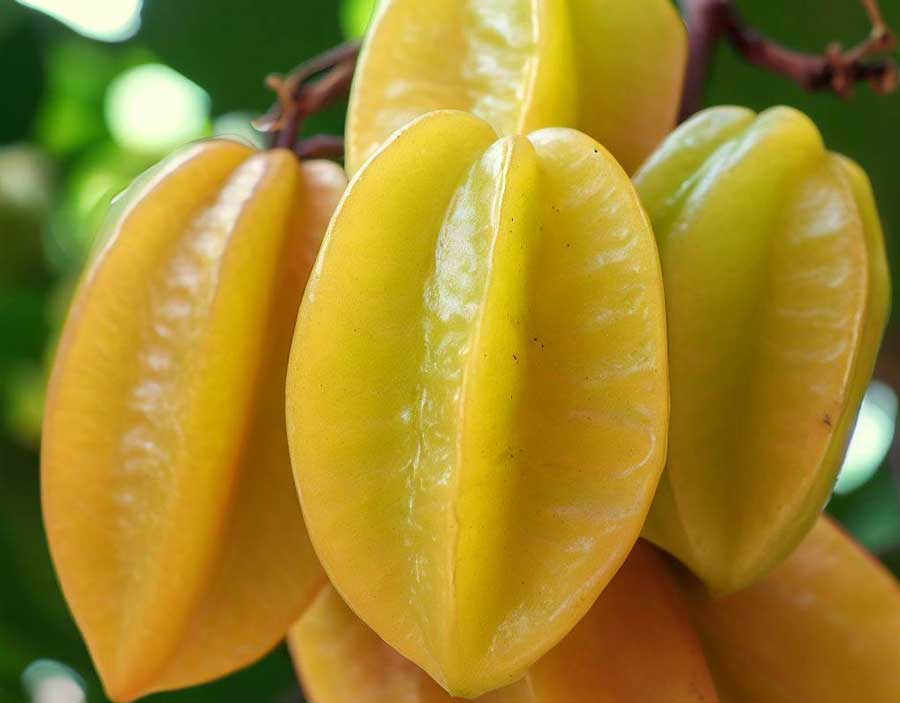
Langsat (ลางสาด): A Fragrant Treat
Langsat, with its translucent, aromatic flesh, tantalizes the senses with a delightful blend of sweet and slightly tart flavours. The mild, fragrant aroma adds to its allure, making it a fragrant treat that captivates taste buds.
Langsat is also a good source of vitamin C, dietary fiber, and various antioxidants. It is widely believed to have health benefits, including promoting digestion and boosting the body’s immune system.
A true gem in Thailand’s exotic fruit selection, Langsat showcases the rich diversity of tropical fruit experiences.
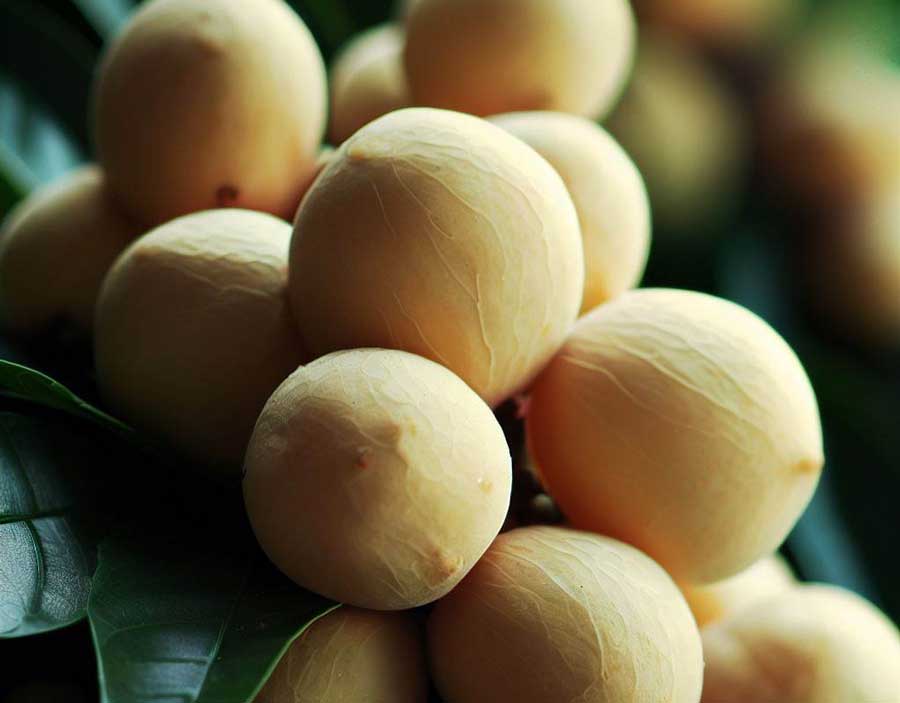
FAQs About Exotic Fruits in Thailand
What are some of the most popular fruits in Thailand?
- Thai fruits like mangoes, papayas, dragon fruits, and durian are among the most popular choices.
Is it safe to eat street vendor fruits in Thailand?
- Yes, street vendor fruits in Thailand are generally safe to eat, but it’s essential to choose vendors with clean and hygienic practices.
When is the best time to visit Thailand for fruit festivals?
- The best time to enjoy fruit festivals in Thailand is during the peak fruit season, which varies depending on the fruit. For instance, the Songkran Festival in April often includes watermelon eating contests.
What is the etiquette for eating durian in Thailand?
- Durian has a strong odor, and it’s advisable to eat it in designated areas or open spaces to avoid offending others. Locals appreciate if you ask for permission before consuming it in public spaces.
Are Thai fruits available year-round, or do they have specific seasons?
- Most Thai fruits have specific seasons when they are at their peak freshness and abundance, although some fruits like bananas and papayas are available year-round.
Can I bring Thai fruits back to my home country when visiting Thailand?
- It depends on the fruit and the import regulations of your home country. Some fruits may be subject to restrictions or require permits.
What are the health benefits of Thai fruits?
- Thai fruits are rich in vitamins, minerals, and antioxidants. They are known to promote overall health, boost immunity, and provide essential nutrients.
What are some unique Thai fruit varieties that are not commonly found elsewhere?
- Exotic Thai fruits like rambutan, salak (snake fruit), and longan are less common in many other countries.
How do I choose ripe fruit at a Thai market or grocery store?
- Look for fruits that are fragrant, have vibrant colors, and yield slightly to gentle pressure. Sellers can often help you choose the best ones.
Thai Exotic Fruits Seasonality
You may be wanting to try some of these exotic fruits you’ve just found out about, but there are a couple of things to consider. They are not always available in every part of the country and, like all kinds of fruit, they are seasonal. Check the table below to avoid disappointment!
| Fruit | Region of Cultivation | Season |
|---|---|---|
| Durian (King of Fruits) | Various regions, e.g., Chanthaburi, Rayong, and Nonthaburi | April to July |
| Mangosteen (Queen of Fruits) | Southern Thailand, particularly Krabi and Trat | May to September |
| Rambutan | Southern and Northern Thailand | May to September |
| Longan | Northern Thailand, e.g., Chiang Mai and Lamphun | June to August |
| Salak (Snake Fruit) | Various regions, e.g., Suphan Buri and Chanthaburi | May to August |
| Dragon Fruit | Northern and Northeastern Thailand | Year-round (peak in April and September) |
| Rose Apple (Chomphu) | Throughout Thailand | Year-round |
| Pomelo | Southern and Northern Thailand | August to October |
| Santol | Southern Thailand, particularly Krabi | May to July |
| Custard Apple (Sweetsop) | Various regions, e.g., Chanthaburi and Nakhon Nayok | June to September |
| Sapodilla (Chikoo) | Various regions, e.g., Chanthaburi and Surat Thani | Year-round |
| Tamarind | Throughout Thailand | Year-round |
| Jackfruit | Throughout Thailand | Year-round |
| Starfruit (Carambola) | Throughout Thailand | Year-round |
| Langsat (Lansium parasiticum) | Southern Thailand, e.g., Nakhon Si Thammarat | June to August |
